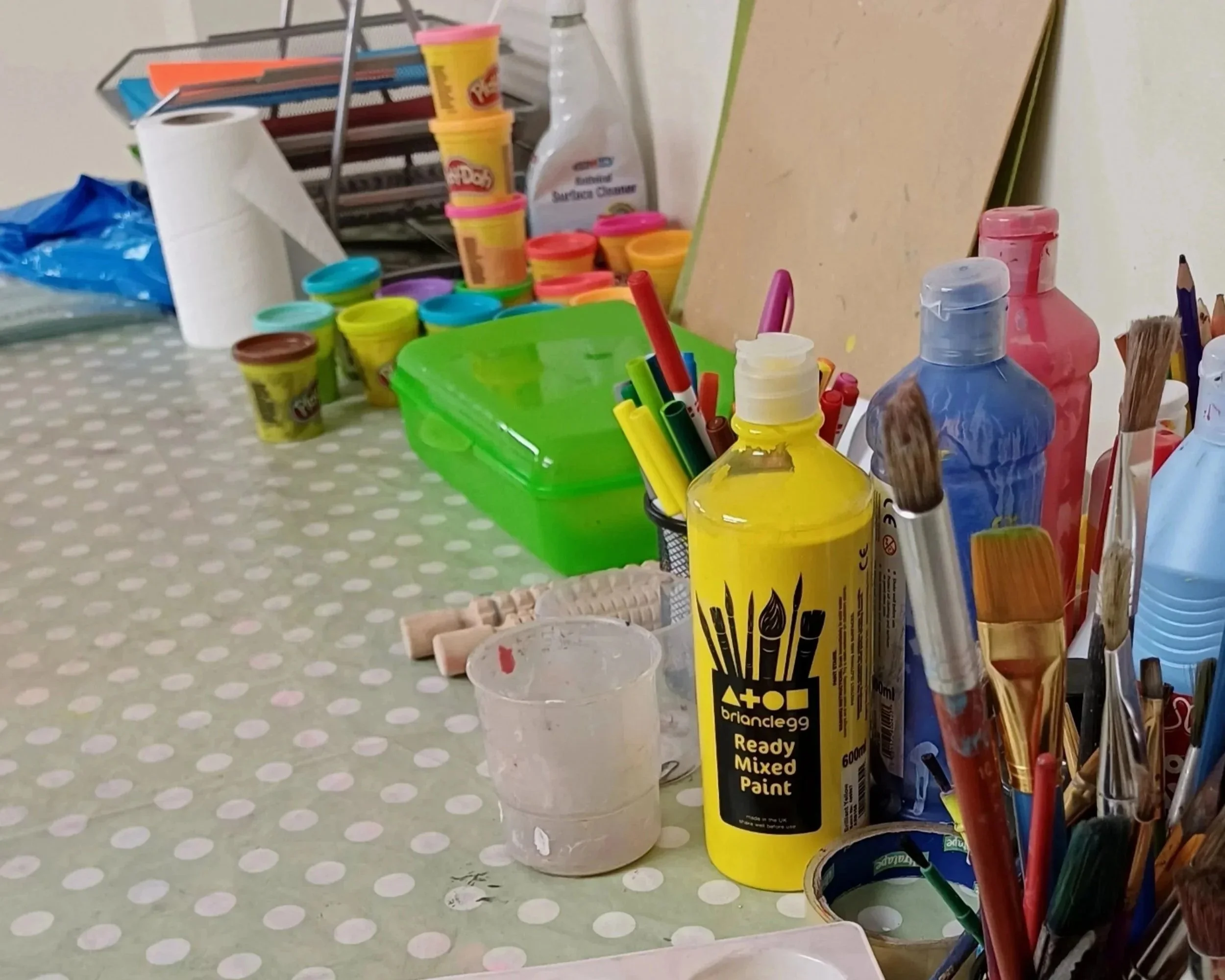
Just like adults, children face difficult challenges and have overwhelming feelings that may be difficult to understand. This might leave them feeling sad, angry or anxious. Their relationships might be affected, or their feelings may be reflected in their behaviour.
Talking things through can be difficult at any age but for a child, using words may be particularly hard; a child’s natural language is creativity and play.
The therapy space that we provide offers the child the opportunity of expressing their feelings and experiences in a safe, non-judgmental environment and introduces the creative process as a way for the child to access and get in touch with their experiences from within.
Children will benefit more from the therapy if attending sessions regularly and for the whole time agreed with the therapist. Missed sessions may result in us offering the slot to someone else in need.
Play
Therapy
The play therapist uses art, movement, drama, puppets, dolls house, sand tray, roleplay toys, storytelling, and clay to help children develop a trusting therapeutic relationship with their therapist, allowing the child to feel safe enough to express and explore their feelings and experiences.
Our therapists take a person-centred approach. This means the therapy is child led. The therapist gently observes and reflects the child’s play and body language, joining in when the child wishes which helps to gain a greater understanding of how the child is feeling.
Through play and creativity, the therapist can then support the child to explore and understand their world. They may support them in finding strategies to cope with overwhelming feelings, help them navigate difficult transitions or make painful memories less intense. All these things can help build resilience and improve self-esteem.
What sort of things can you help my child with?
Every child who comes to therapy is unique and the issues therapy can support are varied. Before therapy begins the therapist will meet with you, and where appropriate your child, to discuss why you might think creative therapy will be helpful for your child.
However, in the therapy room the therapist will be led by your child in terms of what they do and what issues they explore.
Here are some of the areas we can support in:
Anxiety and stress
Low confidence and low self-esteem
Difficulty making friends
Processing life challenges such as family breakdown or moving schools
Bereavement
Children with additional needs or disability (and their siblings)*
Angry outbursts
Coping with a traumatic experience
Domestic Abuse
Physical, emotional and sexual abuse
Neglect
Fears and phobias
*therapy rooms are upstairs- limited accessibility
Complete our referral form here
If you are unsure about whether this is the right service for your child, please call us for an informal chat. We are happy to help.
As your child is nearing the top of our waiting list you will be contacted so that we can get an update on your child. This will include some questions that will help us match you with the appropriate therapist. When a space becomes available, your therapist will contact you to arrange a meeting.
PTUK guidelines


